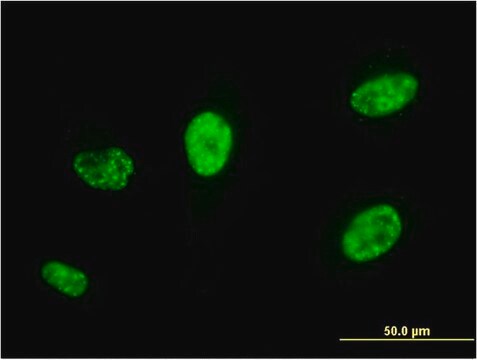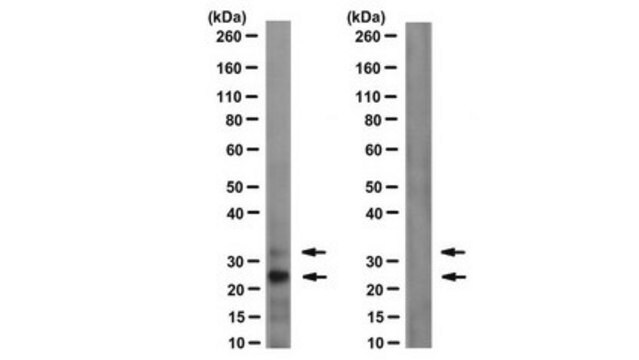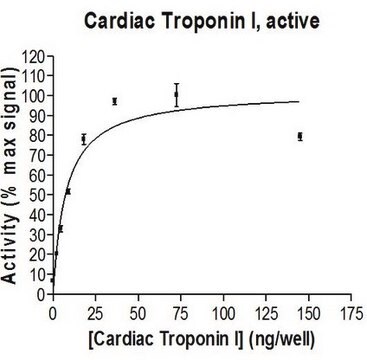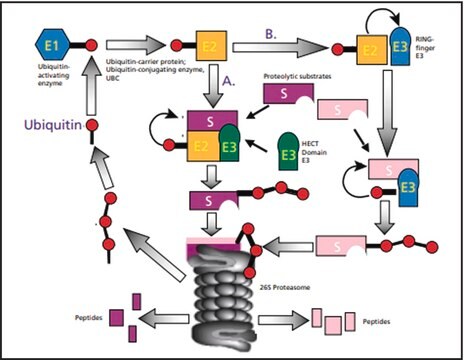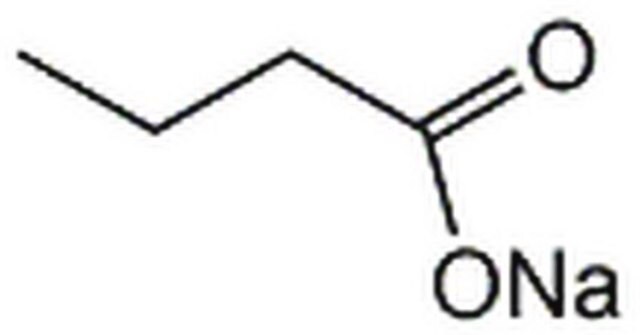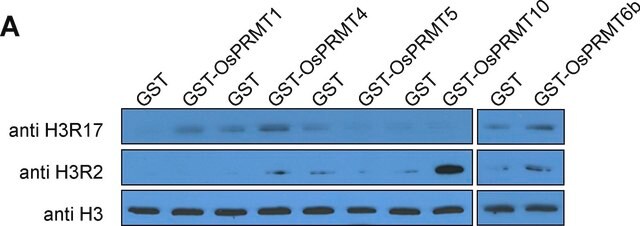05-678
Anti-ubiquityl-Histone H2A Antibody, clone E6C5
clone E6C5, Upstate®, from mouse
Synonyme(s) :
H2AUb, Histone H2A (ubiquityl), H2A histone family, member R, histone 1, H2aa, histone H2A, histone cluster 1, H2aa, H2AK119Ub1
About This Item
Produits recommandés
Source biologique
mouse
Niveau de qualité
Forme d'anticorps
purified antibody
Type de produit anticorps
primary antibodies
Clone
E6C5, monoclonal
Espèces réactives
amphibian, mouse, human, frog, rat, monkey
Fabricant/nom de marque
Upstate®
Technique(s)
ChIP: suitable
immunocytochemistry: suitable
western blot: suitable
Isotype
IgM
Numéro d'accès NCBI
Numéro d'accès UniProt
Conditions d'expédition
dry ice
Modification post-traductionnelle de la cible
unmodified
Informations sur le gène
frog ... H2Ac1(594915)
human ... H2AC1(221613)
mouse ... H2Ac1(319163)
rat ... H2Ac1(24828)
Description générale
Spécificité
Immunogène
Application
This antibody has been reported by an independent laboratory to detect ubiquityl-Histone H2A in cells fixed with either 3% formaldehyde/0.1% Triton X-100 or methanol (Vassilev, A. 1995).
Chromatin Immunoprecipitation:
Reported by an independent laboratory (Wang, H. 2004).
Epigenetics & Nuclear Function
Histones
Qualité
Western Blot Analysis:
A 1:500-1:2000 dilution of this lot detected ubiquityl-Histone H2A in acid extracts from HeLa and 10T1/2 cells.
Description de la cible
Forme physique
Stockage et stabilité
Remarque sur l'analyse
Acid extracts of HeLa cells.
Autres remarques
Informations légales
Clause de non-responsabilité
Vous ne trouvez pas le bon produit ?
Essayez notre Outil de sélection de produits.
Code de la classe de stockage
12 - Non Combustible Liquids
Classe de danger pour l'eau (WGK)
WGK 2
Point d'éclair (°F)
Not applicable
Point d'éclair (°C)
Not applicable
Certificats d'analyse (COA)
Recherchez un Certificats d'analyse (COA) en saisissant le numéro de lot du produit. Les numéros de lot figurent sur l'étiquette du produit après les mots "Lot" ou "Batch".
Déjà en possession de ce produit ?
Retrouvez la documentation relative aux produits que vous avez récemment achetés dans la Bibliothèque de documents.
Notre équipe de scientifiques dispose d'une expérience dans tous les secteurs de la recherche, notamment en sciences de la vie, science des matériaux, synthèse chimique, chromatographie, analyse et dans de nombreux autres domaines..
Contacter notre Service technique

